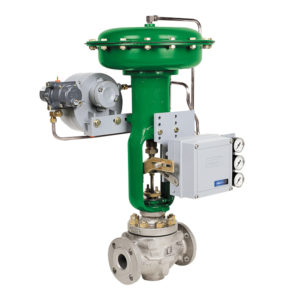Do you need a replacement transmitter? Foxboro®, Rosemount®, and Honeywell® are three of the top transmitter brands, providing a high level of accuracy and stability.
The key to achieving a high level of performance is to ensure that you have the right transmitter for your application and that the transmitter is configured and installed correctly.
Here’s the information you need to know to select a pressure transmitter:
Transmitter type
There are four main types of transmitters. The difference between them is the pressure they use as a reference point.
- Absolute pressure transmitters use a perfect vacuum as their reference point. Since the reference point is static, these devices are not impacted by changes in the local atmospheric pressure. If you have a critical application where accuracy is paramount and local atmospheric pressure may vary, an absolute pressure transmitter may be a good fit.
- Differential pressure transmitters measure the pressure difference between two medias or physical areas. such as pressure drops across valves. These devices are commonly used in the oil and gas and water and wastewater industries to maintain tank levels and monitor pressure changes.
- Gauge pressure transmitters are similar to differential pressure transmitters, but they use the local atmospheric pressure as the reference point to measure the process pressure. These devices are recommended for applications where process media is exposed to the atmosphere, such as vented tanks and open containers.
- Fill system or remote seal pressure transmitters can be used in absolute, differential, and gauge applications. These devices compensate for process and fill fluid density. The ability to mount remotely can also help distance the transmitter from process conditions that may create excessive heat, moisture, or debris.
Communication protocol
The most common communication protocol is the Highway Addressable Remote Transducer, aka HART, protocol. A hybrid analog/digital industrial automation protocol, HART is widely used in the process industries because it allows two-way communication of information beyond just the normal process variable measurements.
For applications where no communication is required, analog-only transmitters are available. Foxboro and Honeywell also offer specialized communication protocols specifically for use with their branded communicators.
Sensor range
You’ll need to select an appropriate range based on the span needed for calibration.
- Range is the full capability of a selected sensor.
- Span is the difference between upper and lower range values.
- Calibration is the upper and lower range values needed.
As a best practice, we recommend selecting a range that allows the span to be somewhere mid-range, not at the extreme upper or lower end of its min and max values. It’s especially important that the span is not too small – a large range with a small span can result in decreased accuracy.
Options
Transmitters are available with a variety of options, which you’ll need to specify. These include the needed materials for any process wetted parts.
- Sensor diaphragm and fill fluid
- Meter
- Flanges, process adaptors (per connection size), etc.
- Manifolds
- Mounting hardware
- Fill systems or remote seals built to specifications
Optional configuration setups
Finally, you can select a specific configuration setup.
- Display – units, % of span, dual, etc.
- Units – PSI, inches H2O, mmHg, etc.
- Alerts/alarms – set point deviation, over range, limits, cutoffs, etc.
- Dampening – adjustable time values for measurement updates
- Tagging – enter personalized tag/stock ID, location, or other critical information
These guidelines apply generally to all pressure transmitters. For specific information about ordering, configuring, and installing remanufactured Foxboro, Rosemount®, and Honeywell transmitters, download the guides below:
- Remanufactured Foxboro Transmitter Ordering, Configuration, and Installation Guide
- Remanufactured Rosemount® Transmitter Ordering, Configuration, and Installation Guide
- Remanufactured Honeywell Transmitter Ordering, Configuration, and Installation Guide
If you need technical assistance, call us at (800) 325-4808.

